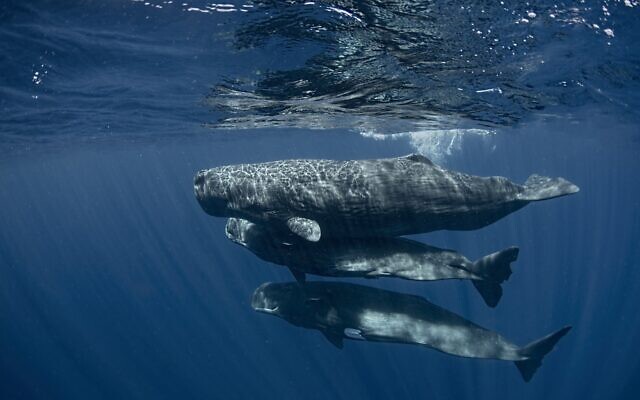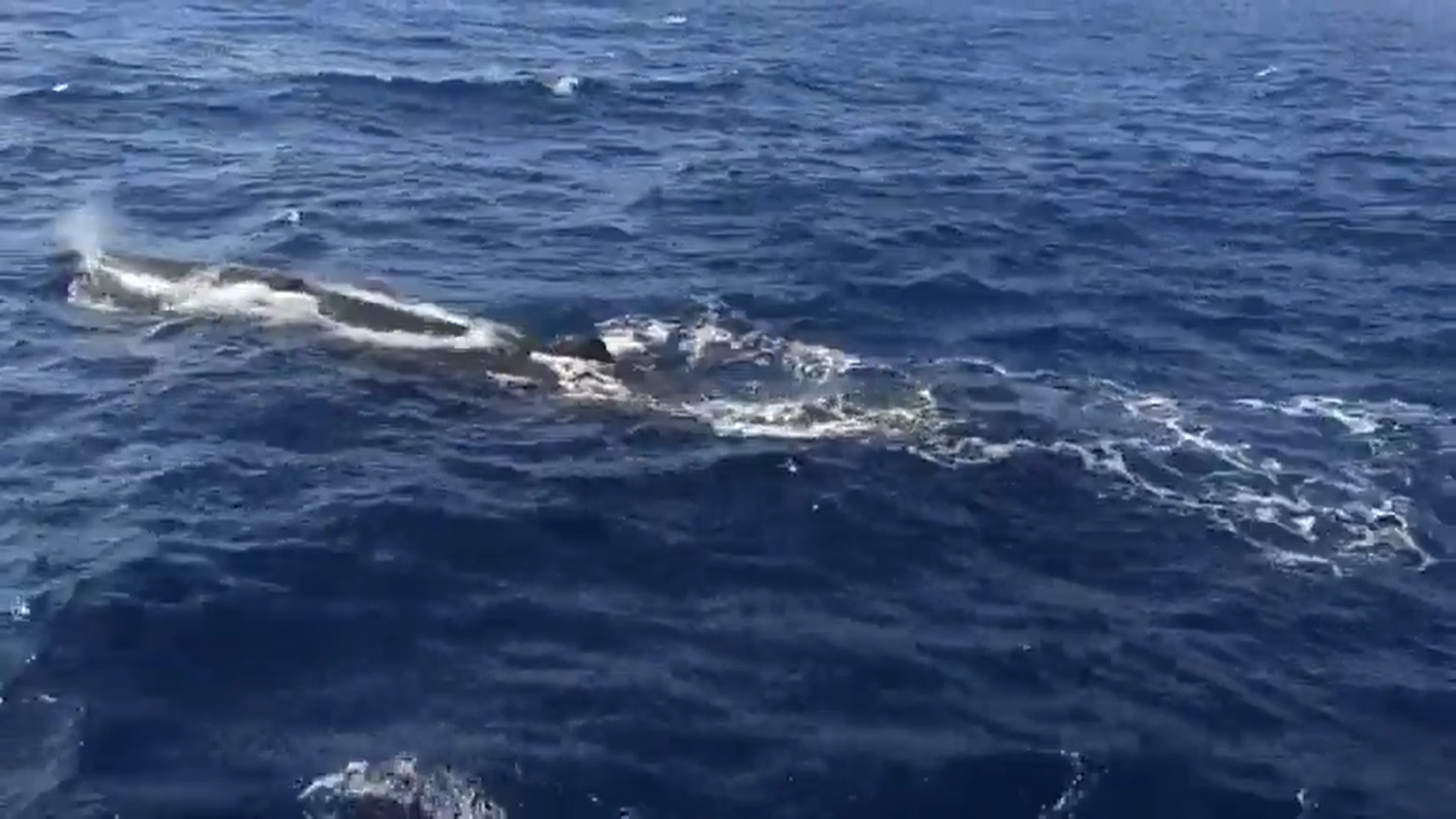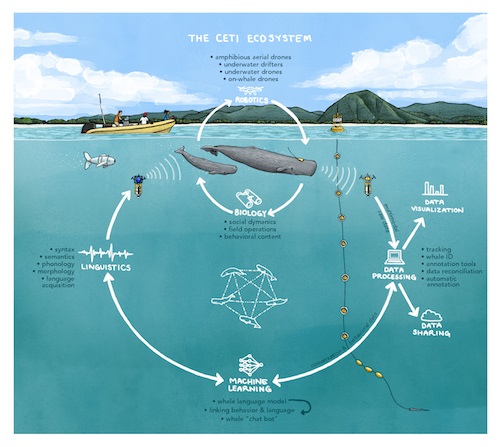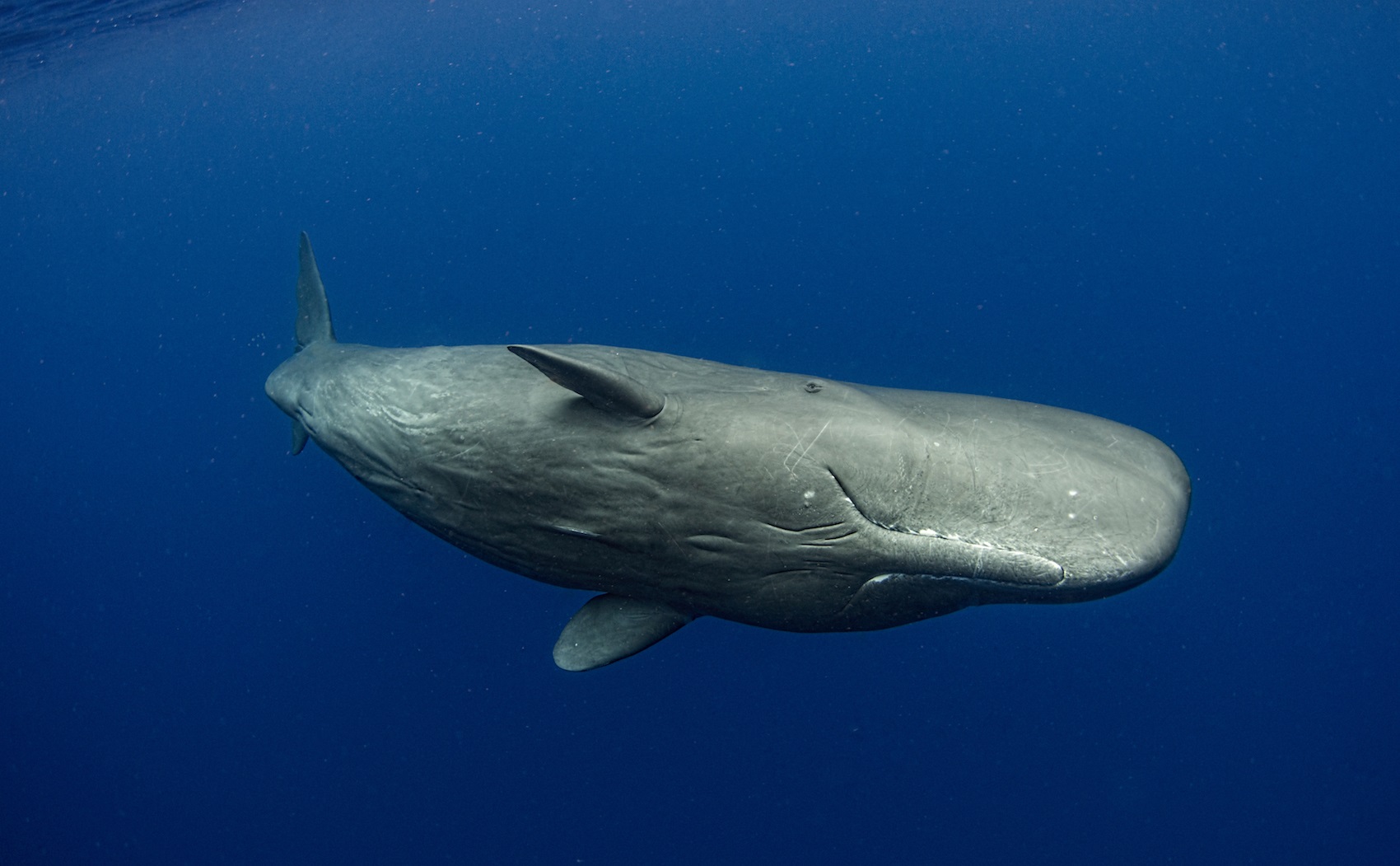
The aim is to provide first blueprint of another animal’s language,
using robot fish to record sperm whale talk, and cutting-edge machine learning and linguistics methods to decode it.
Five Israelis have been invited to join a pioneering global research project aimed at listening into and understanding the language of sperm whales, the animals with the biggest brains on the planet.
Project CETI — Cetacean Translation Initiative — forms part of TED’s Audacious Project program, which annually selects what it calls “big, bold solutions to the world’s most urgent challenges.”
In the Mediterranean, they are generally not found further east than western Turkey. However, in February there was an unusual sighting of a young sperm whale off the coast of Nahariya, in northern Israel.

Now, scientists are aiming to decode their language.
“These mammals make a clicking sound at varying frequencies when they are in the company of other whales,” said one of the leaders of the project, Prof. Dan Tchernov of University of Haifa’s Leon H. Charney School of Marine Sciences, the scientific director of the Morris Kahn Marine Research Station.
“The question is, is this just a simple code or a true language? Right now, our database is not comprehensive enough to know the answer to this question.”
“However, with the advancement of machine learning, and advanced linguistics, we realized that if we gathered enough data about their voices, the context in which these sounds are employed, and understood their behavior and motivation behind these sounds, we can then develop an algorithm which will determine whether they have an authentic language.”
Leading the international project is Prof. David Gruber, presidential professor of Biology and Environmental Science at City University of New York, who is also an explorer for National Geographic. Gruber discovered the first biofluorescent sea turtle, and developed a “shark-eye” camera to gain a shark’s perspective of the underwater world.
According to the project’s website, Gruber’s team has already applied deep machine learning techniques to sperm whale clicks, with 99.5% accuracy in pulling sperm whale clicks out of more general noise, 97.5% accuracy in categorizing 23 types of click patterns, and 95.3% accuracy in recognizing whale dialects.
“These results demonstrate AI’s capability to recognize patterns in this aquatic Morse code,” the website says.
CETI scientists will combine these insights with findings from The Dominica Sperm Whale Project, off the coast of the Caribbean island country Dominica, where Dr. Shane Gero, CETI’s whale biology leader, has been gathering data on the sounds, dialects, social lives, relationships and behaviors of 30 families of sperm whales.
The first step is to develop “delicate” robot technologies. These will include sensors on the seabed, robotic fish that will swim alongside the whales to record their conversations, and sea surface drones equipped with dropdown hydrophones.
Once the information and data have been collected, scientists will decode using cutting-edge machine learning, and linguistics methodologies. “Project CETI will also launch a public portal, and through partners like the National Geographic Society will engage a global community in the deep wonder of our attempt of meaningful dialogue with a non-human species,” the website says.

Also joining the project from University of Haifa are Dr. Roee Diamant of the Marine Sciences Department, who will be the project’s lead acoustic adviser in charge of placing the world’s most advanced marine mammal listening and localization equipment, and Dr. Bracha Nir, head of the university’s Department of Communication Disorders, who will investigate mother and calf communication themes.
Among other key recruits are Israeli American Prof. Shafi Goldwasser, professor of Electrical Engineering and Computer Science at the Massachusetts Institute of Technology and a member of the Department of Computer Sciences and Applied Mathematics at Weizmann Institute of Science in Rehovot. She is a leading figure in the science of cryptography (encrypting and decrypting data).
Prof. Michael Bronstein is an expert in deep machine learning and Director of Graph Learning Research at Twitter, who received his PhD from the Technion Israel Institute of Technology and is currently chair in Machine Learning and Pattern Recognition at the Faculty of Engineering, Department of Computing, at Imperial College, London.
Whales help to regulate the atmosphere
Like all great whales, sperm whales, which can be found in all oceans from the poles to the equator, have been found to be key actors in the regulation of the atmosphere.
Accumulating massive amounts of carbon in their bodies while they live, they take an average of 33 tons of CO? to the bottom of the ocean when they die. This compares with 22 kilograms (48 pounds) absorbed by an average tree in one year.
Furthermore, where there are whales, there are also vast populations of phytoplankton, which feed off the nitrogen and iron found in whale excreta. These nutrients are dispersed vertically, as the whales move up to the sea’s surface to breathe, and back down again — they will dive 3,280 feet in search of squid — and horizontally, as they migrate.

Phytoplankton contribute at least 50 percent of all oxygen to the atmosphere and absorb about 37 billion metric tons of CO?, an estimated 40 percent of all marine CO? produced, in the process of photosynthesis. This has been equated with the amount of carbon dioxide captured by four Amazon forests.
Whaling has reportedly reduced world sperm whale populations from 1.1 million to around 360,000. Although hunting has more or less stopped, whales are still threatened by entanglement in fishing nets and disturbance or collision with ships.
In 2018, a dead sperm whale that washed ashore in Indonesia was found to contain nearly 6 kilograms (13 pounds) of plastic waste in its stomach. This included 15 drinking cups, four plastic bottles, 25 plastic bags and two flipflops, the BBC reported at the time.
Female sperm whales live in pods with their young while bulls live apart.
(Times of Israel).